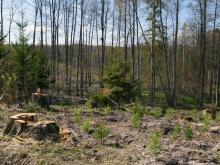 Asset Publisher
Asset Publisher
Polish forests
Poland is in the European lead, while concerning the area of all forests. They cover about 29,2 % of the country territory, and grow within the area of 9,1 million hectares. The overwhelming majority of the forests is state owned, of which almost 7,6 million hectares are managed by the State Forests National Forest Holding..
The number of Polish forest is still growing. The forestation rate of the country has increased from 21 % in 1945 to 29,2 % at the moment. Between 1995 and 2008, the forest area increased by 310 thousand ha. The basis for afforestation works is the "National Programme for Increasing the Forest Cover" (KPZL), assuming an increase of the forestation rate up to 30 % by 2020 and up to 33 % by 2050. Polish forests abound in flora, fauna and fungi. 65 % of the total number of animal species live there.
The forests grow in our country on poor soils, mainly because of the development of the agriculture in previous years. It influences the distribution of the types of the forest sites in Poland. Over 55 % of the forest areas is covered with coniferous forests. In other areas, there are forest sites, mainly the mixed ones. Their small part constitute alder and riparian forests – not more than 3 %.
In the years 1945 – 2011 the area of natural deciduous tree stands within the area of the State Forests National Forest Holding increased from 13 to 28,2 %.
Within the lowlands and uplands the most often occurring tee species is pine. It covers 64,3 % of the forest area of the State Forests National Forest Holding and 57,7 % of private and commune forests. In the mountains the predominant species is European spruce ( in the west) and European spruce with beech (in the east). Domination of pine is the result of carrying on sustainable forest management in the past. Once, the monocultures (crops or cultivations of one species) were the answer to the great demand of industry for wood. Such forests appeared to be quite fragile to climatic factors. They also were often the prey of pests' expansion.
In Polish forests, the share of other tree species, especially deciduous trees have been systematically increasing. The foresters have stepped aside from monocultures – that is why, they try to fit specific species of the forest stand to the natural stand, that would be proper for the given area. Thanks to that, in the years 1945 – 2011, the area of the deciduous tree stands within the lands of the State Forests National Forest Holding increased from 13 to 28,2 %. There occur more and more frequently the following tree species: oaks, ashes, maples, sycamore maples, elms, but also birches, beeches, alders, poplars, hornbeams, aspens, tilias and willows.
Our forests are the most often represented by the forest stands aged 40 to 80 years. The average age of the forest equals 60 years. More and more trees are of big size at the age over 80 years. Since the end of the Second World War, the forests' area has increased up to almost 1,85 million hectares.
Raport o stanie lasów w Polsce 2012
 Asset Publisher
Asset Publisher
Wspomnienie Śp. prof. Jana Szyszko
Wspomnienie Śp. prof. Jana Szyszko
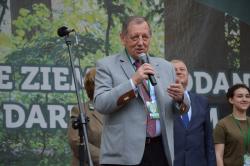 fot. Krzysztof Sobolewski, Minister Środowiska Jan Szyszko w trakcie Ekologicznego Forum Młodzieży 2017
fot. Krzysztof Sobolewski, Minister Środowiska Jan Szyszko w trakcie Ekologicznego Forum Młodzieży 2017
 fot. Krzysztof Sobolewski, Minister Środowiska Jan Szyszko w otoczeniu uczestników Ekologicznego Forum Młodzieży 2017
fot. Krzysztof Sobolewski, Minister Środowiska Jan Szyszko w otoczeniu uczestników Ekologicznego Forum Młodzieży 2017
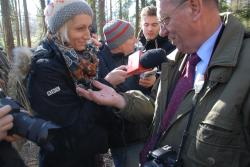 fot. J. Krawczyk, prof. Jan Szyszko podczas Konferencji Naukowej pt." Puszcza Białowieska - mity, fakty i przyszłość" 13.03.2016 r.
fot. J. Krawczyk, prof. Jan Szyszko podczas Konferencji Naukowej pt." Puszcza Białowieska - mity, fakty i przyszłość" 13.03.2016 r.
Profesor Jan Szyszko nie żyje. W dniu 9 października 2019 r. odszedł wieloletni minister środowiska, mąż stanu i wybitny naukowiec.
Kochał Polskę. Był osobą ciepłą, życzliwą, otwartą na Ojczyznę i jej problemy. Już od najmłodszych lat miał styczność z naturą i obserwacją zwierząt, stąd właśnie narodziła się jego miłość do przyrody.
Służył Polsce bezinteresownie. Leśnicy zawdzięczają Mu tak wiele. Nie uległ międzynarodowej presji w sprawie Puszczy Białowieskiej. Skutecznie bronił polskiego dziedzictwa przyrodniczego, a także nie bał się podejmować radykalnych działań mających na celu ochronę drzewostanów przed masowym atakiem kornika drukarza.
Ś.p. prof. Jan Szyszko był przyjacielem Puszczy Białowieskiej oraz opiekunem jej mieszkańców. Wielokrotnie inicjował spotkania z lokalną społecznością. Z troską wysłuchiwał jej problemów i chętnie oferował pomoc w codziennych trudnościach, takich jak np. gaz czy brak drewna na potrzeby opałowe.
W latach 2016-2017 był współinicjatorem inwentaryzacji przyrodniczej Puszczy Białowieskiej na ogromną skalę. To dzięki Jego niestrudzonej i zaangażowanej postawie, lokalna, krajowa, a także międzynarodowa społeczność poznała walory przyrodnicze i kulturowe Puszczy Białowieskiej.
Jak sam podkreślał: Puszcza Białowieska to perła polskiego leśnictwa, polskie dziedzictwo kulturowo przyrodnicze i dziedzictwo lokalnej społeczności. Puszcza Białowieska która jest wzorem jak czynić sobie ziemię poddaną, dla dobra przyrody i dla dobra człowieka.
Był wielkim człowiekiem. Swoje niezwykłe człowieczeństwo ukazywał w bardzo różnych kontekstach. Wielokrotnie atakowany przez oponentów, z godnością przyjmował każdą krytykę, racjonalnie i rzeczowo przedstawiając swoje argumenty. Nawet protestującym przeciwko Jego decyzjom ekologom potrafił zaoferować ciepłe napoje, co podkreśla Jego wielkość.
Przez lata wychował wiele pokoleń młodych ludzi, zaszczepiając w nich miłość do nauki, ale także do Ojczyzny, łącząc te dwa ważne elementy.
Jego zaangażowanie oraz profesjonalizm były zauważane i doceniane także za granicą. Wyniki Jego niezwykłych badań docenionych przez Światową Federację Naukowców pozostaną trwałym dziedzictwem naukowym naszego i innych narodów. Był doktorem honoris causa Uniwersytetu w Lünebergu w Niemczech i Uniwersytetu Użgorod na Ukrainie oraz laureatem prestiżowej nagrody im. Ettore Majorany „Nauka dla pokoju” przyznanej w 2008 roku przez Światową Federację Naukowców za badania nad znaczeniem struktury krajobrazu wiejskiego i długofalowych zmian w systemie klimatycznym, a także nad wymianą dwutlenku węgla między ekosystemem i atmosferą. Został drugim Polakiem, po Janie Pawle II, laureatem tej nagrody porównywanej z Nagrodą Nobla.
Leśna brać zawsze będzie pamiętać o oddanym patriocie i wybitnym przyrodniku.
Darz Bór Przyjacielu!
Rodzinie i Bliskim Pana Profesora Jana Szyszko składamy wyrazy najgłębszego współczucia oraz wspieramy Ich modlitwą.
"WIECZNY ODPOCZYNEK RACZ MU DAĆ, PANIE ..."
Dyrektor Andrzej Józef Nowak oraz leśnicy z Regionalnej Dyrekcji Lasów Państwowych w Białymstoku


 fot. Paweł Fabijański
fot. Paweł Fabijański
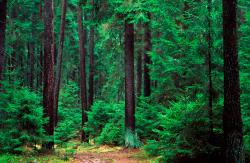 fot. Paweł Fabijański
fot. Paweł Fabijański
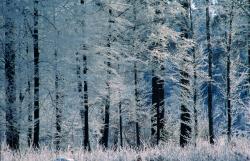 fot. Paweł Fabijański
fot. Paweł Fabijański



